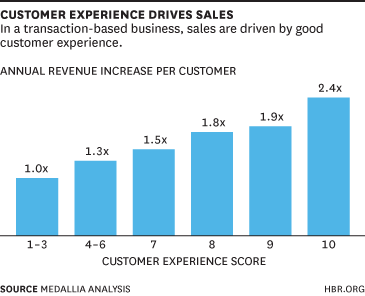
Much has been written about using customer service as a competitive advantage in business. It makes a lot of sense. When customers find products and services so similar in functionality and price, providing the best customer service becomes a distinct differentiator.
Yet despite this, few companies are truly providing great customer service. They might think they are. But customer service is more than responding to calls and emails quickly. It’s more than just a friendly voice and can-do attitude.
All too often within a company, all its lines of business are silo’d. Customer service is no different and is forced to operate on its own. This is disconnected customer service. Though customer service is collecting valuable telemetry on the issues affecting customers, nothing is done to address the underlying reason why they are having those problems. Being disconnected from the rest of the company is not just frustrating for customer service; the costs of disconnected service are high and the missed opportunities are many.
Operational Costs
Customers don’t contact customer service to let them know everything is going well. No, customer service is ground zero for customer problems. And while some customer issues may truly be unique, the majority of calls, emails, and chats a contact center receives are for common problems–and these problems could be avoided if customer service were not disconnected.
Why respond to the same issues over-and-over? Why would companies willingly absorb the cost of solving the same problem repeatedly?
Customer service acts as the eyes and ears to problems customers encounter. With every customer contact, they are gathering information related to a customer’s struggle. When customer service is connected to the rest of the organization, those problems impacting multiple or even all customers–topics like incorrect bills, unclear product information, quality issues, and more–once identified can be assigned to the departments that can resolve them permanently. Finance can fix the invoicing problem. The documentation team can rewrite a problematic manual. Engineering or manufacturing can address a production issue. Doing so means that future customers don’t encounter that same issue and the cost of delivering customer service is reduced.
Overall Experience
It’s been said customer service is what happens when the customer experience fails. And disconnected customer service results in a customer experience that will continue to fail and never improve.
That same problem or set of problems that are driving up operational costs are also impacting the customer experience. When it’s clear an issue is not an isolated incident and it’s likely to affect many customers’ experience, it’s time to take action.
When customer service is connected to the rest of the organization, the underlying condition of a problem can be addressed by departments outside of customer service. By addressing the root cause, future customers will not experience the issue. The Harvard Business Review put it this way: “Delivering great experiences actually reduces the cost to serve customers from what it was previously. Unhappy customers are expensive — being, for example, more likely to return products or more likely to require support.”
Revenue
A few years ago, poor customer service was estimated at costing businesses $62 billion per year. Research just a year later had an even higher estimate: $83 billion. A study by the Northridge Group adds additional insight:
- 54% of customers would try a new brand in search of better customer service.
- 27% would abandon a brand entirely if they received poor customer service.
It only makes sense that if you receive bad service, you will take your money elsewhere. Now bear in mind these figures were determined as a result of a customer being frustrated by the treatment they received from customer service.

Customer experience, meanwhile, can also drive revenue but in a different manner. A Harvard Business Review study found that the higher a customer perceived their overall experience, the greater annual revenue they spent with a business. After all, why risk spending money and encountering a poor experience with another vendor when you are satisfied or delighted by the experience you are already receiving?
Making Connections
Providing great customer service. Making continuous improvements to the customer experience. Reducing service costs while driving new revenue opportunities. All three are now more important than ever to companies wanting to hold the greatest possible edge over their competitors and succeed in the marketplace. Yet they fail to see why these initiatives are failing when customer service has been isolated from the rest of the company.
Take full advantage of the product, service, and process problems customers are contacting you about. Break down the walls between customer service and the rest of your company. Make it possible for customer service to connect with other departments to deliver permanent solutions and not just workarounds. Reducing and even preventing the need to contact customer service and driving better experiences–to both save costs and increase revenue–is only possible with connected customer service.



